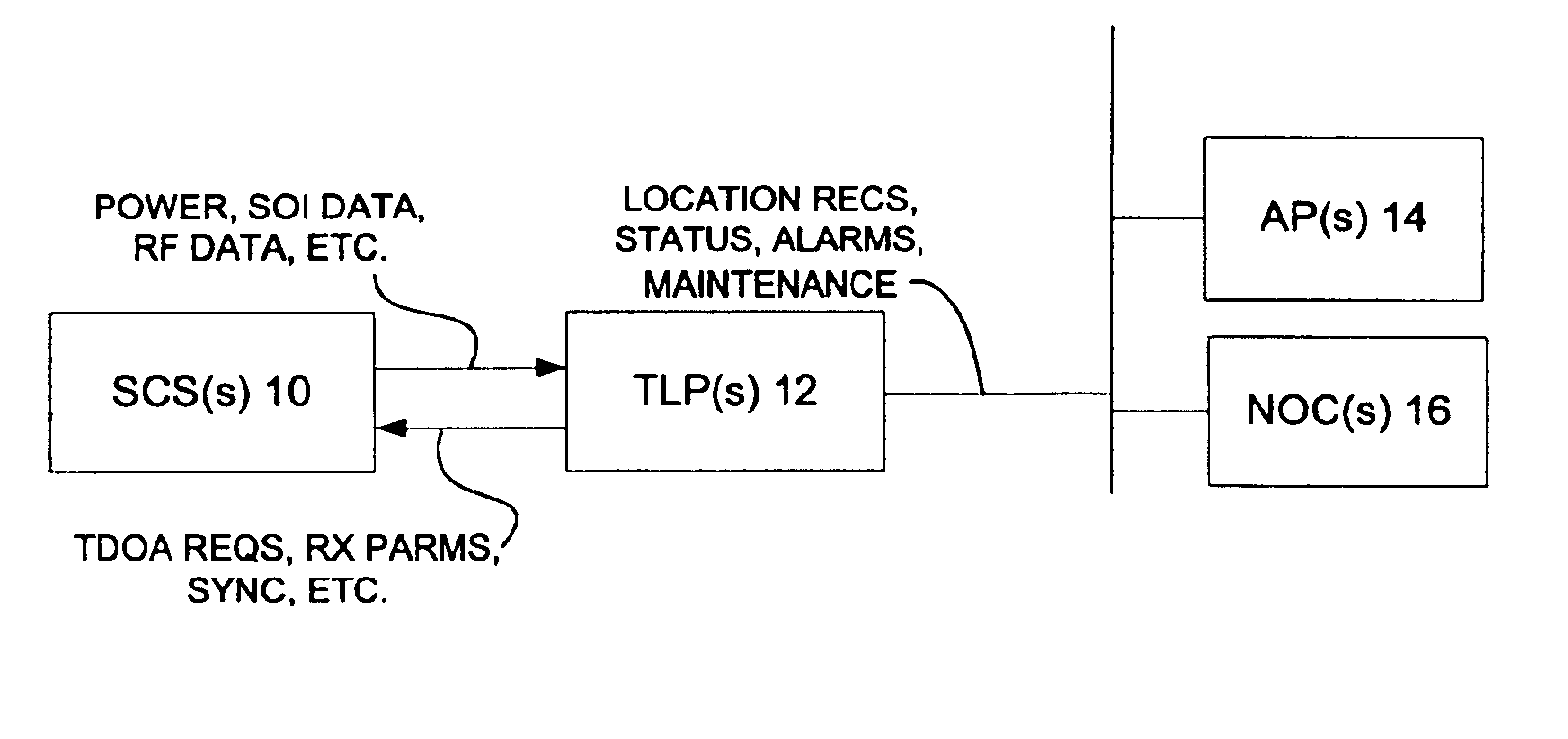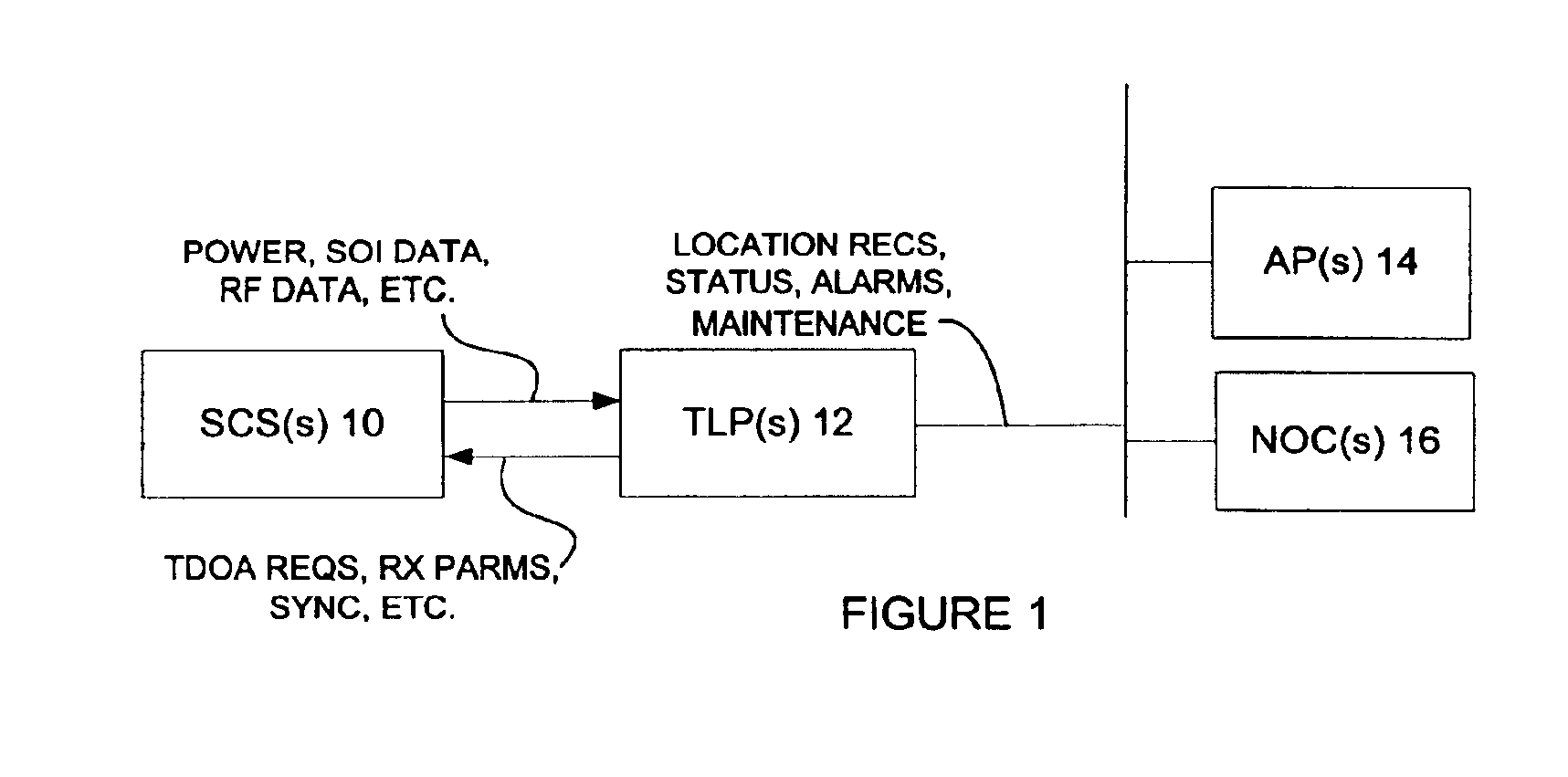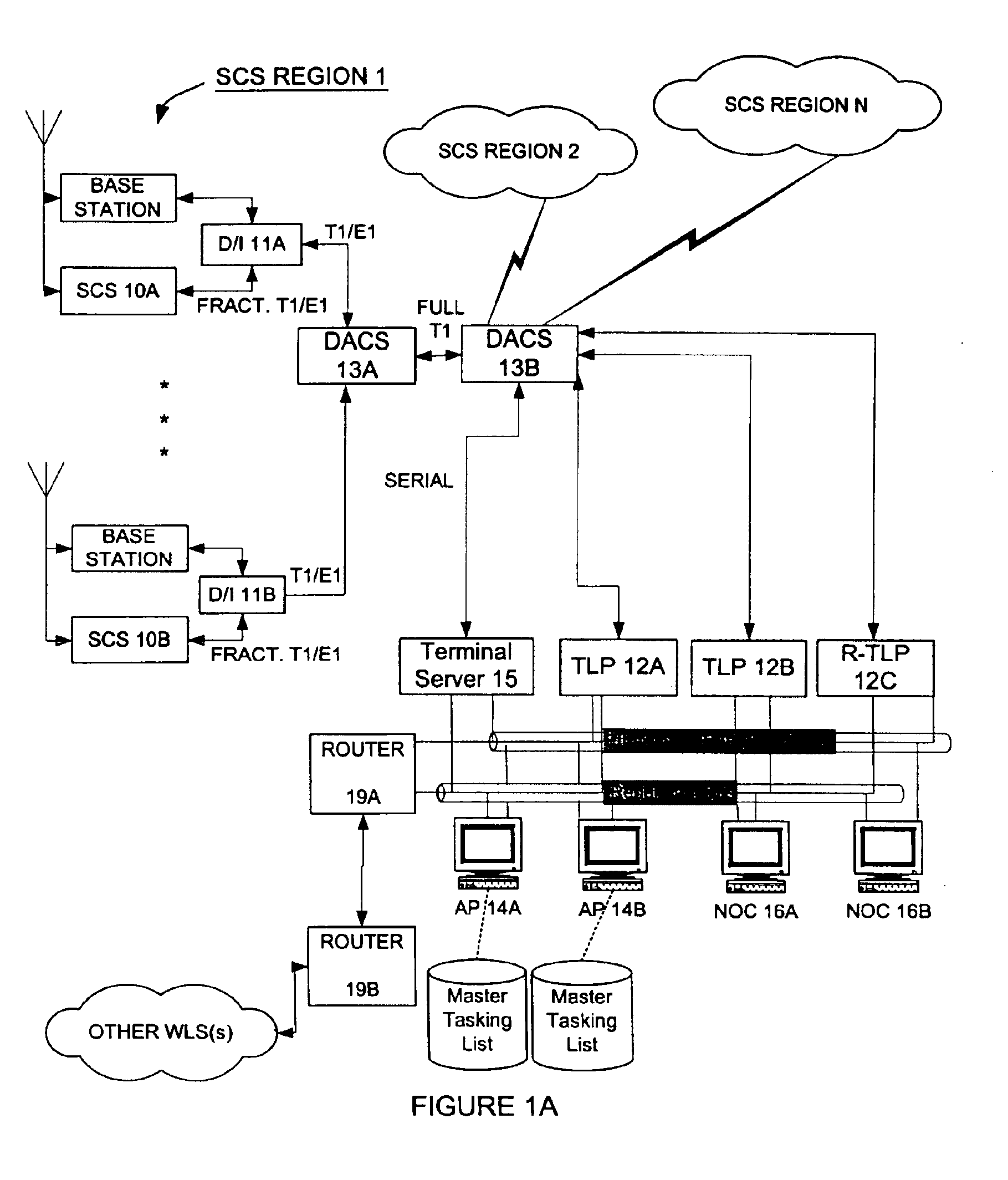Method for estimating TDOA and FDOA in a wireless location system
- Summary
- Abstract
- Description
- Claims
- Application Information
AI Technical Summary
Problems solved by technology
Method used
Image
Examples
Embodiment Construction
A goal of the present invention is to produce better TDOA and FDOA estimates for use in determining the location of mobile or wireless phones and other mobile transmitters by using a combination of system topology, geographic topology and RF propagation information to create a set of assumptions about a signal received by one of the network of signal collection site receivers. Having received the signal at one site, the time interval for any other site can be estimated from the distance between the two sites. The Doppler shift of the signal at the single site allows for some velocity information to be collected and thus any other site may be allowed to constrain the frequencies searched. Since a much smaller search window is produced through the use of these assumptions, the number of “false positives” is reduced and the signal correlation threshold may be reduced, allowing for signals with lower signal-to-noise ratio (SNR) to contribute to the TDOA, AOA (angle of arrival), or hybri...
PUM
 Login to View More
Login to View More Abstract
Description
Claims
Application Information
 Login to View More
Login to View More - R&D
- Intellectual Property
- Life Sciences
- Materials
- Tech Scout
- Unparalleled Data Quality
- Higher Quality Content
- 60% Fewer Hallucinations
Browse by: Latest US Patents, China's latest patents, Technical Efficacy Thesaurus, Application Domain, Technology Topic, Popular Technical Reports.
© 2025 PatSnap. All rights reserved.Legal|Privacy policy|Modern Slavery Act Transparency Statement|Sitemap|About US| Contact US: help@patsnap.com



